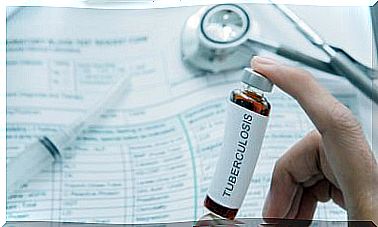Phenytoin: What It Is And How It Works
Phenytoin, an antiepileptic compound synthesized by Heinrich Biltz in 1908, was used as an antiarrhythmic agent to treat arrhythmias caused by digoxin intoxication, which was used to treat heart problems and caused the heart to beat strongly and regularly.
In 1938 H. Houston and Tracy Putnam discovered that phenytoin could control seizure states. Anti-seizure drugs are used to combat, prevent, and interrupt seizures, or seizures, by blocking the activity of certain neurotransmitters and reducing electrical conductivity between neurons.
In short, they do not cure the disease, but they help alleviate its symptoms. It is a drug subject to medical supervision and prescription, so it should never be taken without proper medical advice.
In which cases is phenytoin prescribed?
Phenytoin is often prescribed to control most disorders and disorders that can cause epileptic seizures. It has the benefit of not having sedative effects. In addition, it can also be prescribed before, during or after a neurological intervention.
Mechanism of action of phenytoin
The phenytoin not only is responsible for reducing episodes of seizures, also limits the intensity of the shock and its spread:
- Alters the conduction of potassium, sodium and calcium.
- It concentrates amino acids and neurotransmitters, such as acetylcholine and gamma-aminobutyric acid.
In addition, when high doses are administered, it can reach:
- Inhibit the release of serotonin and norepinephrine.
- Promote dopamine reuptake.
- Inhibit the activity of monoamine oxidase, an enzyme that catalyzes the oxidation of monoamines and the degradation of neurotransmitters such as serotonin and norepinephrine.
Although it is less effective in preventing drug-induced seizures, its sedative effect is less. Generally, it is given in doses of 10 to 20 micrograms.
How is phenytoin administered?

- Long-acting capsules. They should be swallowed whole, without splitting, chewing, crushing or diluting. They should not be taken if they present discoloration, and it is advisable to accompany them with natural drinks.
- Chewable tablets. They can be chewed before swallowing or swallowed whole without chewing.
- Oral suspension (liquid). It should be shaken before each use so that it mixes evenly. The proper amount should be given, so ask your doctor or pharmacist if you have questions about how to measure your dose.
The capsules are taken 1 to 4 times a day, while the tablets and oral suspension are taken 2 or 3. Although it is recommended to take phenytoin at the same time every day, it is best to follow the doctor’s instructions trusted pharmacist.
Normally the doctor will prescribe a low dose of phenytoin that will be gradually increased every 7 days . You should not take a higher dose than indicated.
There are several compounds classified as phenytoin, to which the body will react differently. If you need to change your medicine, your doctor will adjust the dose.
How is phenytoin absorbed?

Among the more well-known side effects that can occur when taking this drug are:
- Constipation.
- Headache.
- Difficulty speaking
- Hair and gum growth.
- Difficulty getting to sleep.
- Loss of balance, confusion, and dizziness.
- Increase in blood sugar levels.
- Abnormal body and eye movements.
In addition, an overdose can cause side effects, such as:
- Jaundice.
- General discomfort.
- Loss of appetite
- Inflammation of the face.
- Inflamed glands.
- Articulations pain.
- Uncontrollable shaking
- Bleeding or bruising
- Loss of consciousness
- Difficulty understanding reality.
In case of presenting any of these side effects, call your trusted doctor to receive immediate attention and decrease the dose.









